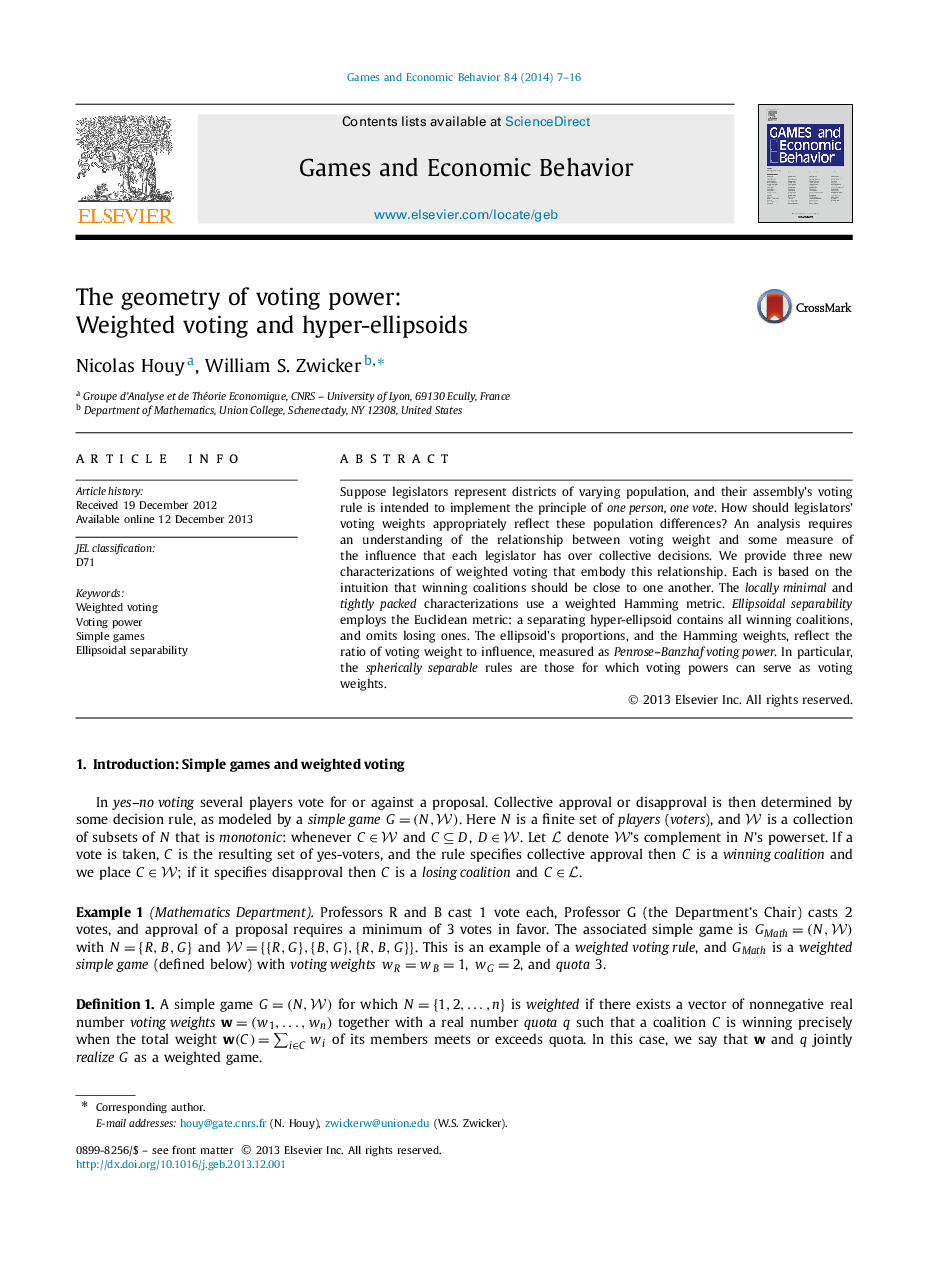| Article ID | Journal | Published Year | Pages | File Type |
|---|---|---|---|---|
| 5071822 | Games and Economic Behavior | 2014 | 10 Pages |
â¢New characterizations of weighted voting: ”winning coalitions are closely spaced”.â¢Locally minimal & tightly packed characterizations use a weighted Hamming metric.â¢Ellipsoidal separability uses the Euclidean metric.â¢The separating hyperellipsoid contains all winning coalitions, and omits losing ones.â¢Ellipsoid proportions and Hamming weights reflect ratio of voting weight to Penrose-Banzhaf voting power.
Suppose legislators represent districts of varying population, and their assembly's voting rule is intended to implement the principle of one person, one vote. How should legislators' voting weights appropriately reflect these population differences? An analysis requires an understanding of the relationship between voting weight and some measure of the influence that each legislator has over collective decisions. We provide three new characterizations of weighted voting that embody this relationship. Each is based on the intuition that winning coalitions should be close to one another. The locally minimal and tightly packed characterizations use a weighted Hamming metric. Ellipsoidal separability employs the Euclidean metric: a separating hyper-ellipsoid contains all winning coalitions, and omits losing ones. The ellipsoid's proportions, and the Hamming weights, reflect the ratio of voting weight to influence, measured as Penrose-Banzhaf voting power. In particular, the spherically separable rules are those for which voting powers can serve as voting weights.
